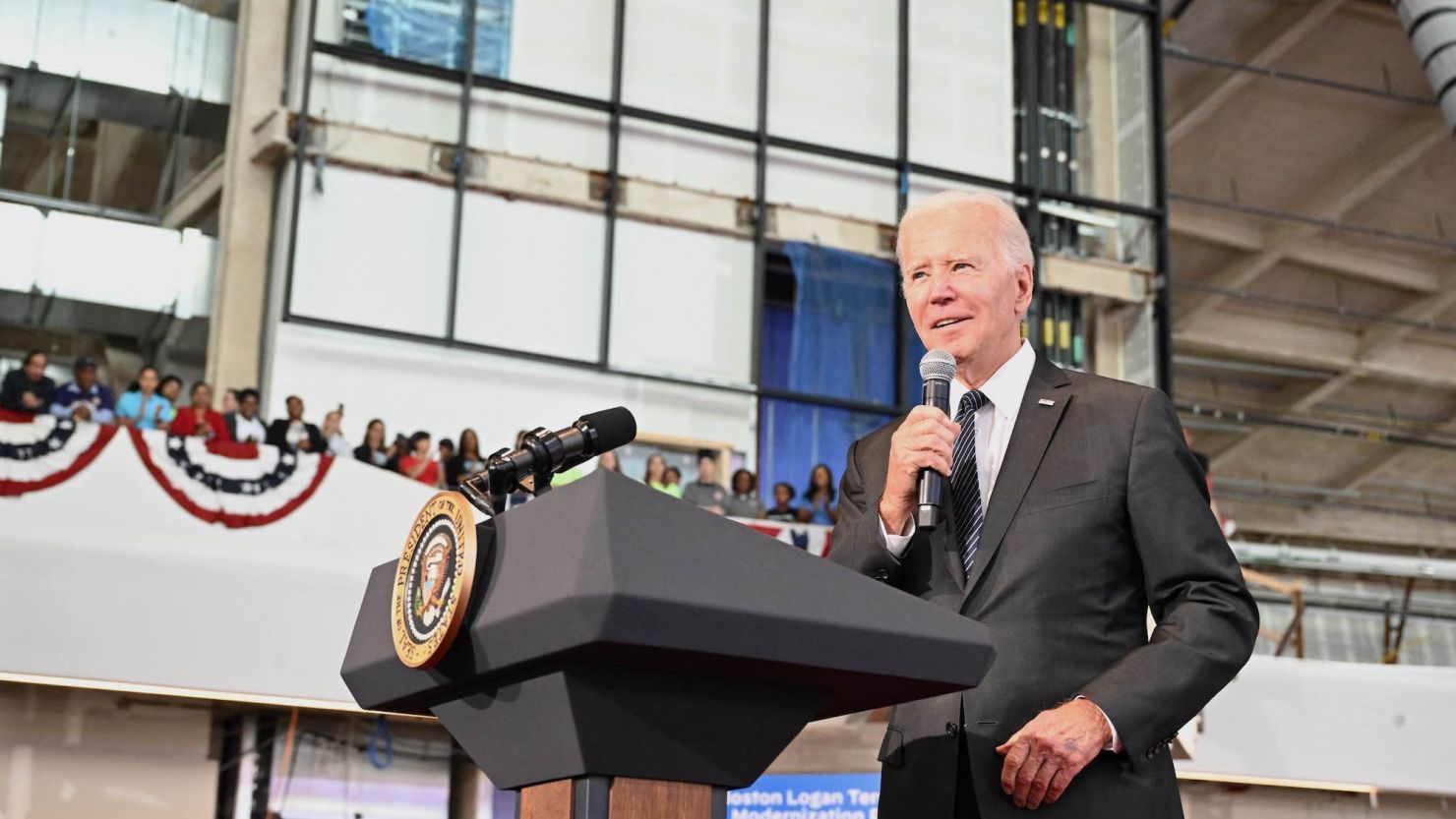Americans are beginning to learn how funds from the bipartisan infrastructure package passed by Congress late last year will help improve their roads, bridges and airports.
Billions of dollars in federal funds have been awarded to specific infrastructure projects and doled out to states across the country over the past 10 months.
The Infrastructure Investment and Jobs Act, which was signed into law in November 2021, will provide $550 billion of new federal investments over five years, touching everything from bridges and roads to the nation’s public transit, broadband, water and energy systems.
Passed with bipartisan support, the law marks one of the biggest wins for President Joe Biden, who touted the new spending at Boston Logan International Airport on Monday. The administration as well as members of Congress are eager to show off the various projects the federal money will help build as the midterm elections approach.
Some of the infrastructure money is distributed through what’s known as formula programs, which deliver funds directly to states that decide how to disburse the money. Other pots of money are available through competitive grant programs that require state and local agencies to apply for funds to be used for specific projects.
Most of the programs are funded annually so that communities that weren’t selected for money this year aren’t out of luck and can apply in the future.
Here are four projects that have been awarded federal money so far.
Renovating Terminal E at Boston Logan International Airport
The Boston Logan International Airport has received $62 million from the Infrastructure Investment and Jobs Act this year. It’s one of 85 airports across the country that received a grant from the infrastructure law’s Airport Terminal Program, which will award nearly $1 billion annually for five years.
A majority of the funds will be used to modernize the airport’s Terminal E, which has become a source of congestion and flight delays due to prolonged taxi times and idling of aircraft, as well as inefficient passenger processing. The renovations will expand the terminal’s capacity, replace the HVAC system, expand the baggage claim area to accommodate gate expansions and rehabilitate the existing ticket counter area, gates and jet bridges.
The funds will also go toward improvements to the roadways that airplanes use to circulate the airport.
Adding a berth at Port Tampa Bay
Port Tampa Bay in Florida has been awarded a $12.6 million grant to construct a new berth at its satellite facility known as Port Redwing that will provide room for three large ships to be docked simultaneously.
The project will help alleviate supply chain challenges and is expected to create more than 800 full-time jobs, according to the Department of Transportation.
The money was awarded from the department’s Rebuilding American Infrastructure with Sustainability and Equity program, known as RAISE. It’s one of several grant programs that communities can apply to for funding for specific road, bridge, transit, rail, port or intermodal transportation projects. More than $2.2 billion was awarded this year for 166 projects across the country.
Constructing a pedestrian bridge in Phoenix
Phoenix was awarded $25 million to construct a long-proposed pedestrian and bicycle bridge across the Rio Salado River.
The bridge will provide residents of the South Phoenix community who don’t own cars a safe way to access the jobs, schools and services located in the city’s downtown area. The bridge also will offer a convenient connection to the South Central Light Rail Extension, which is currently under construction.
The project was funded by a RAISE grant.
Installing a snow-melting system in New Hampshire
The Department of Transportation has awarded $19.5 million to the city of Berlin, New Hampshire, so that it can rehabilitate roads, sidewalks and municipal parking areas, as well as install a new snow-melting system in the downtown area. The system will utilize waste heat from a nearby renewable fuel-powered electrical generation plant.
Berlin, a rural community of about 10,000 people, receives an average of seven feet of snow a year. Local officials say the new snow-melting system will help make the downtown area more accessible for residents and visitors, as well as reduce vehicle crashes and pedestrian slips and falls.
CNN’s Betsy Klein contributed to this report.




